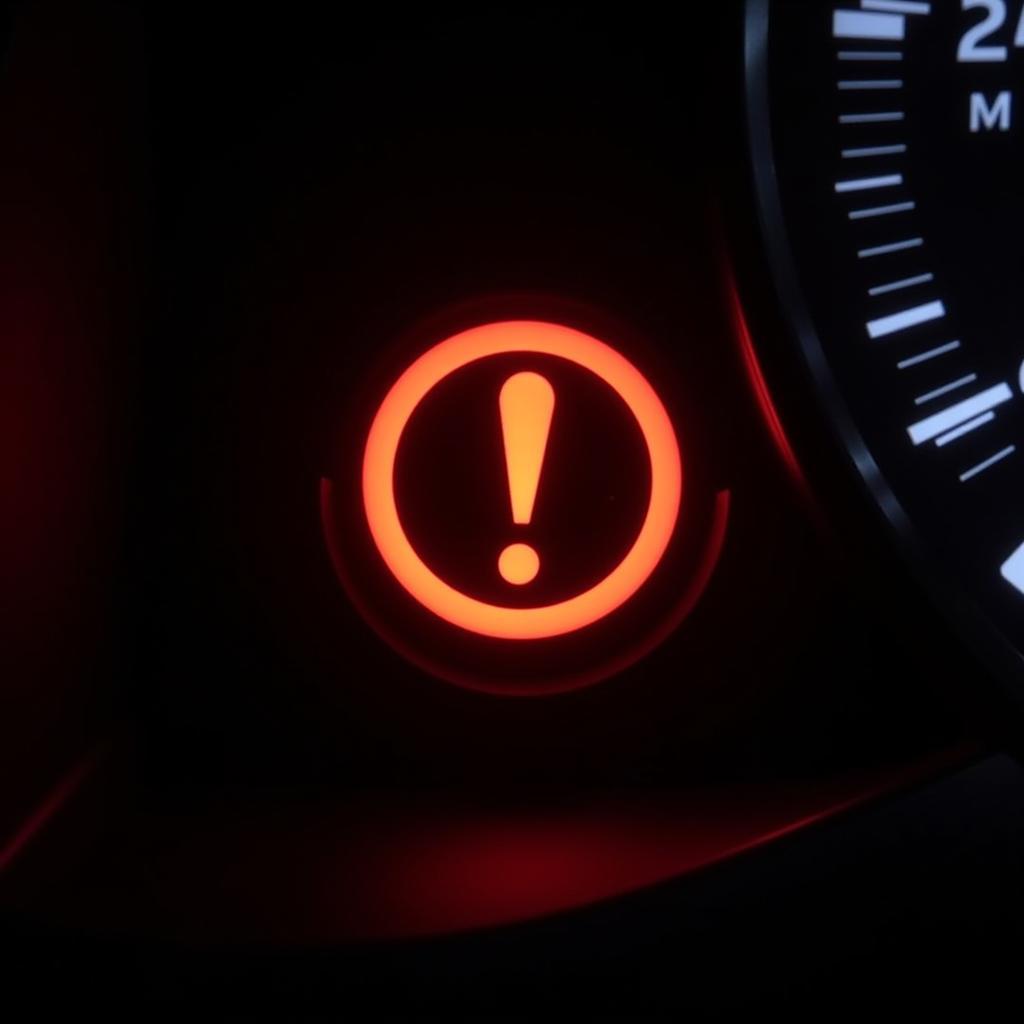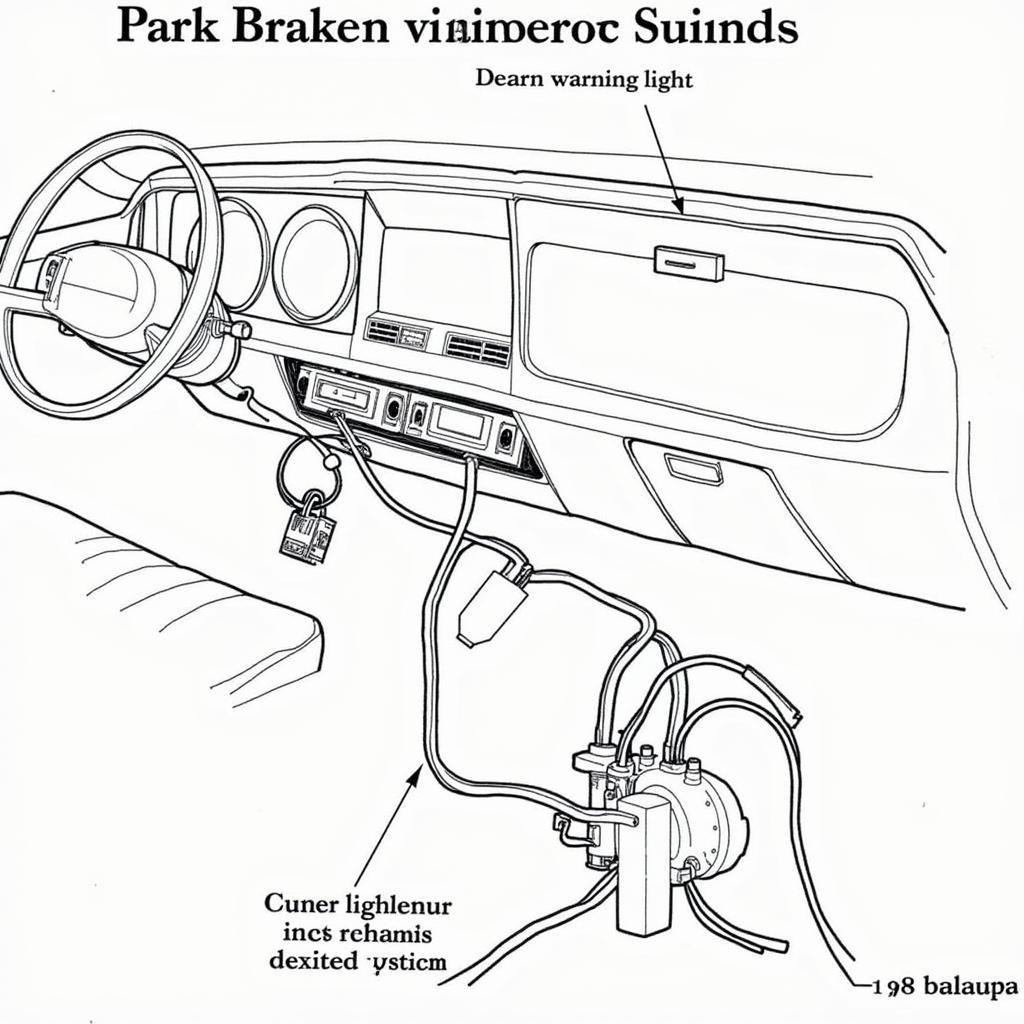The brake system warning light tells you quizlet can be a starting point, but understanding its various meanings requires a deeper dive. This light is a crucial component of your vehicle’s safety system, designed to alert you to potential issues within your braking system. Ignoring it can lead to dangerous driving conditions and costly repairs. This article will explore everything you need to know about this warning light, from its basic meanings to troubleshooting common problems.
Understanding the Brake System Warning Light
The brake warning light, often represented by an exclamation mark within a circle, or sometimes the word “BRAKE,” can illuminate for several reasons. While a quizlet might offer a simplified overview, a comprehensive understanding is vital for safe driving.
Common Reasons for Illumination
- Low Brake Fluid: This is the most common culprit. Low brake fluid can indicate a leak in your brake lines, which requires immediate attention.
- Parking Brake Engaged: Sometimes, the light stays on simply because you haven’t fully disengaged the parking brake. While seemingly obvious, it’s a frequent oversight.
- Faulty ABS System: If your vehicle has Anti-lock Brakes (ABS), the warning light can signify a problem within this system. This could range from a sensor malfunction to a more serious issue.
- Worn Brake Pads: Many modern vehicles have sensors that detect worn brake pads and trigger the warning light.
- Brake System Malfunction: A general malfunction within the brake system, such as a failing master cylinder or a problem with the brake booster, can also activate the light.
 Brake System Warning Light on Car Dashboard
Brake System Warning Light on Car Dashboard
What to Do When the Light Comes On
If your brake warning light illuminates, it’s crucial to react promptly and responsibly. Don’t panic, but don’t ignore it either.
- Check the Parking Brake: Ensure the parking brake is fully disengaged.
- Pull Over Safely: If the light remains on, find a safe place to pull over and assess the situation.
- Check Brake Fluid Level: Carefully inspect the brake fluid reservoir. If the level is low, do not drive the vehicle. Call a tow truck.
- Inspect for Leaks: Look for signs of brake fluid leaks around the wheels, brake lines, and under the vehicle.
- Seek Professional Help: If you cannot identify the problem, or if the brake fluid is low, contact a qualified mechanic immediately.
Troubleshooting Brake System Issues
While some issues, like a disengaged parking brake, are simple to resolve, others require professional expertise. Here’s a deeper look at troubleshooting common problems:
Diagnosing Low Brake Fluid
Low brake fluid almost always indicates a leak. Finding the source of the leak is crucial. This may involve inspecting brake lines, calipers, and wheel cylinders.
Dealing with ABS Issues
Modern diagnostic tools are necessary to pinpoint ABS problems. These tools can read error codes stored in the vehicle’s computer, providing valuable insights into the issue.
“Ignoring the brake warning light can be incredibly dangerous,” says automotive diagnostic specialist, Robert Johnson. “It’s a clear indication that something isn’t right with your braking system, and delaying repairs can lead to brake failure.”
Addressing Worn Brake Pads
Worn brake pads can be identified by a grinding or squealing noise when braking. Visual inspection can also confirm wear. Replacing brake pads is a relatively straightforward procedure, but it’s essential to use the correct parts and follow proper procedures.
Beyond the Quizlet: Advanced Diagnostics and Remote Solutions
In today’s automotive landscape, remote diagnostics and software installations are revolutionizing how we approach vehicle repairs. These advanced techniques allow expert technicians to access vehicle data remotely, diagnose problems, and even install software updates to resolve certain issues.
“Remote diagnostics can significantly reduce downtime and offer faster solutions for many brake system issues,” explains Sarah Miller, a leading expert in automotive remote programming. “By accessing the vehicle’s data remotely, we can often pinpoint the problem without the need for a physical inspection, saving valuable time and resources.”
Conclusion
While the brake system warning light tells you quizlet might provide a basic overview, understanding the intricacies of this critical warning system is paramount. Regular maintenance, prompt attention to warning lights, and leveraging advanced diagnostic techniques can ensure a safe and reliable driving experience. Remember, your brakes are your lifeline on the road, so never ignore any warning signs.
FAQ
- What does the brake warning light look like? It’s typically an exclamation mark within a circle or the word “BRAKE.”
- Can I drive with the brake warning light on? It’s highly discouraged. Pull over safely and assess the situation.
- What if my brake fluid is low? Do not drive the vehicle. Call a tow truck.
- How can I check my brake pads? Look for wear indicators or listen for grinding noises.
- What is remote diagnostics? It’s a method of diagnosing car problems remotely using specialized software.
- How often should I check my brake fluid? It’s recommended to check your brake fluid level at least once a month.
- What are the benefits of remote diagnostics for brake systems? Faster diagnosis, reduced downtime, and potential cost savings.

